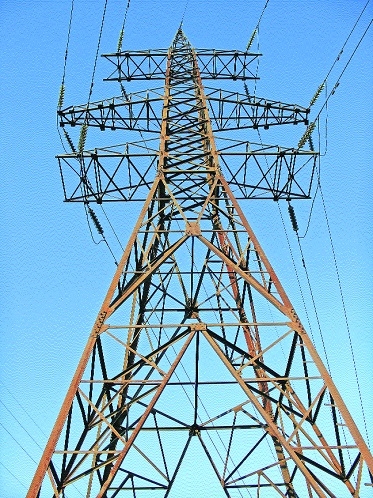VIDARBHA’S POWER WOES: III
| Date :07-Sep-2024 |

By Kartik Lokhande :
Higher power tariff leaves industries in Vid suffering competitive disadvantage
Industrial power consumption percentage declines in Maharashtra in 61 years!
“Maharashtra levies the highest tariff per unit of kWh both in relation to high tension and low tension consumers. Power being the essential substantial input for manufacturing sector, the industry of Maharashtra is put to a competitive disadvantage with reference to the industrial units located in other States,” observed the High-Level Committee on Balanced Regional Development Issues in Maharashtra, or Kelkar Committee, in its report released in October 2013.
Around 11 years down the line since that observation, not much course correction has taken place it seems, as far as the link between industries and power tariff in Maharashtra is concerned. In the light of situation prevailing before 2013, Kelkar Committee had recommended adoption of lower tariff for Vidarbha region. “We believe it will go a long way towards promoting industrialisation including encouraging MSMEs,” the report had recommended.
The same year, a report of the Confederation of Indian Industries (CII) also flagged ‘high power tariffs’ as an area of concern for industries in Vidarbha. “Industries themselves face frequent power cuts resulting in disruption of operations.
For instance, high levels of power shortages had driven around 25-30 textile companies to move from Vidarbha to Chhattisgarh... Lower power tariffs in neighbouring States such as Chhattisgarh, Andhra Pradesh, and Madhya Pradesh have resulted in the shift of investments and industries to those States,” it had stated. The CII report also suggested ‘differential tariff rate for industries in the region’ to attract industries to the region. The other suggestions included reserving a percentage of power generated within Vidarbha to meet the energy requirements of the region, reduction in power tariffs with incentives such as tax rebates and lower power tariffs to industries, and exploring the option of open access as an alternative to reducing the cost of power for industry.
However, things have not changed in an industry-encouraging manner, it seems. The data in the latest Economic Survey of Maharashtra 2023-24 released in June 2024, reveals some interesting facts in this regard. Since the data is compiled by the Government of Maharashtra, it must be treated as authentic.
As per the data, the industrial consumption of electricity has DECLINED between 1960-61 and 2022-23!
In 1960-61, the industrial consumption of electricity was 1,853
Million kWh as against total consumption of 2,720 Million kWh for the entire State of Maharashtra. The industrial consumption was 68.12 per cent of total consumption that year.
The agricultural consumption was 15 Million kWh, which constituted just 0.55 per cent of total electricity consumption in the State. The domestic consumption was 260 Million kWh, that is, 9.56 per cent of total consumption.
Cut to 2022-23.
The industrial consumption of electricity increased manifold to 58,856 Million kWh. Though it registered manifold increase in numbers, it was actually only 39.03 per cent of total consumption of 1,50,771 Million kWh. For a layman, this indicates a decline by 29 percentage, as compared to the share of industrial consumption in total consumption of electricity in 1960-61. Some may say that the decrease in industrial consumption could be attributed to industries switching to captive power plants in big numbers. But, then, no official and authentic data of industry-wise captive power generation and use is available in public domain.
In sharp contrast, the agricultural consumption increased to 37,481 Million kWh in 2022-23, which constituted 24.86 per cent of total consumption that year. Thus, agricultural consumption increased from just 0.55 per cent in 1960-61 to a whopping 24.86 per cent in 2022-23. The domestic consumption also rose from 260 Million kWh (9.56 per cent of total consumption) in 1960-61 to 32,741 Million kWh (21.71 per cent) in 2022-23.
No wonder that energy expert like R B Goenka, Chief of Energy Cell of Vidarbha Industries Association (VIA) and former Director of MSEB Holding Company, is skeptical of the scenario. In one of his presentations before the top Government authorities, he had said, “The dynamics of electoral politics made it difficult to increase tariffs
of some consumer categories including agriculture
consumers.
Political parties adopted competitive populist policies to increase subsidies. As a result, farmers today
have come to expect free or highly subsidised power and there is a fear that undertaking the highly unpopular measures of reducing or withdrawing the power subsidies would be equivalent to political suicide for State-level policymakers.” He made this observation considering massive subsidy for agricultural consumers of Maharashtra State Electricity Distribution Company Limited (MSEDCL), whose percentage in total electricity consumption has increased from 0.55 per cent in 1960-61 to 24.86 per cent in 2022-23.
Though the data is for the entire State, the industries in industrially backward region struggle the most for survival. In fact, owing to higher power tariff in Maharashtra as compared to that in adjoining State of Chhattisgarh, many industries either reduced production, migrated to other States or closed down.
A compilation by VIA dating back to November 2022, revealed that three of six industries in Maharashtra that had sought reduced contract demand were from Vidarbha region alone. Besides, at least two of 10 industries that had migrated out of Maharashtra were from Vidarbha. These 10 industries had migrated to Chhattisgarh, Silvassa, Dadra, Madhya Pradesh, Rajasthan, or Karnataka. Further, 36 industries had closed down in the years preceding 2022. Of these, two were from Nagpur district, the VIA compilation stated.
The impact has been tremendous on various sectors. The negative impact on steel and hospitality sectors can be discussed as examples of the problem.
(To be continued)